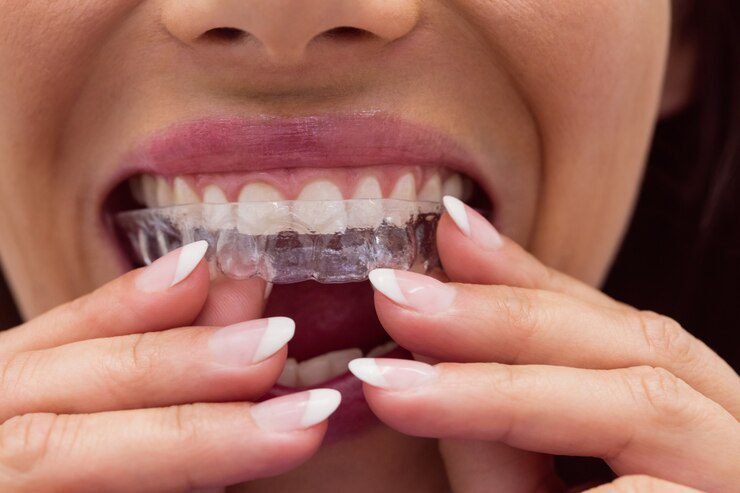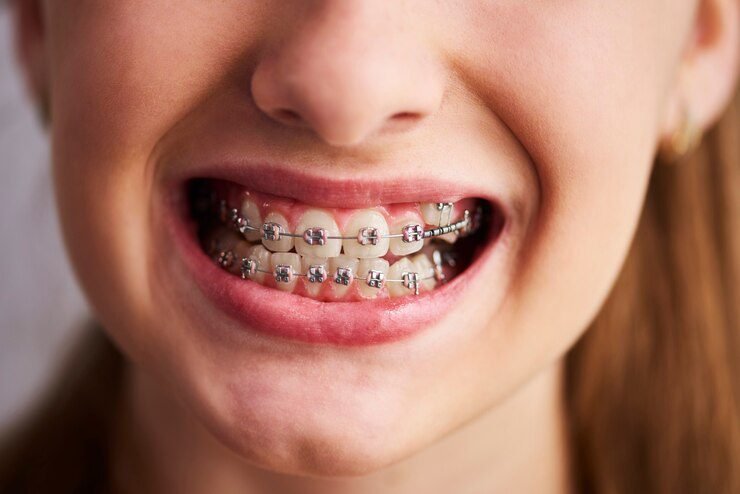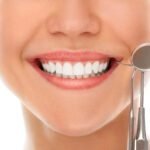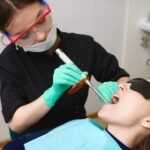Table of Contents
Understanding Orthodontic Treatment Options
Orthodontic treatment encompasses a wide range of options that aim to improve Braces alignment and appearance of teeth and jaws. These treatment options are designed to address various orthodontic issues, such as uneven bite, crooked teeth, overcrowding, and gaps between teeth. Understanding these treatment options is crucial for individuals seeking orthodontic care.
One popular treatment option is Invisalign, a virtually invisible aligner system that gradually moves teeth into their desired positions. Invisalign offers numerous benefits, including improved aesthetics, increased comfort, and enhanced convenience. Unlike traditional braces, Invisalign aligners are easily removable, allowing for easier brushing and flossing, as well as the freedom to eat a wider variety of foods. In addition, Invisalign treatment typically requires fewer visits to the orthodontist compared to traditional braces. This makes it an attractive option for individuals with busy schedules or those who prefer a more discreet orthodontic treatment.

Exploring the Benefits of Invisalign
Invisalign, a popular option for orthodontic treatment, offers a range of benefits for those seeking to align their teeth and achieve a confident smile. One of the key advantages of Invisalign is its virtually invisible appearance, making it an appealing choice for individuals who may feel self-conscious about wearing traditional braces. The clear aligners are custom-made to fit snugly over the teeth, effectively straightening them over time.
Another notable benefit of Invisalign is the convenience it offers. Unlike traditional braces that require regular visits to the orthodontist for adjustments, Invisalign allows for greater flexibility. Patients can remove the aligners when eating or brushing their teeth, providing a more seamless integration into their daily routine. This feature also allows for easier maintenance, with the aligners requiring simple cleaning methods to ensure optimal oral hygiene.
In addition to these advantages, Invisalign treatment has been shown to be effective in correcting a variety of dental issues, including overcrowding, spacing, and bite misalignment. It is important to note, however, that the suitability of Invisalign may vary depending on individual cases. Consulting with an experienced orthodontist is crucial to determine the most appropriate treatment option based on your specific needs and goals.

Evaluating the Advantages of Traditional Braces
Traditional braces have long been a trusted and effective method for orthodontic treatment. One of the primary advantages of traditional braces is their versatility in addressing a wide range of orthodontic issues. Whether it’s overcrowding, gaps between teeth, or misalignment, braces can be customized to suit each patient’s specific needs.
In addition to their ability to tackle various orthodontic problems, traditional braces also have a proven track record of success. Many studies have shown the effectiveness of braces in achieving desired results, such as straightening teeth, improving bite alignment, and enhancing overall oral health. With the guidance of an experienced orthodontist, patients wearing braces can expect to see noticeable improvements over time.
Moreover, traditional braces offer a durability that is unmatched by other orthodontic treatment options. Made from high-quality metal or ceramic brackets and wires, braces are designed to withstand the daily pressures of chewing and speaking. This resilience allows patients to continue their everyday activities with confidence, knowing that their braces will remain effective throughout the treatment period. Additionally, braces require minimal maintenance, making them a convenient choice for those seeking a reliable and hassle-free orthodontic solution.
Assessing Your Orthodontic Needs and Goals
When considering orthodontic treatment, it is important to assess your individual needs and goals. Orthodontic treatment can help improve not only the appearance of your teeth but also their functionality and overall oral health. Understanding your specific concerns and desired outcomes will guide you in selecting the most suitable treatment option.
One key aspect to consider is the alignment of your teeth. Misaligned teeth can lead to various issues such as difficulty in chewing, cleaning, and speaking, as well as an increased risk of tooth decay and gum disease. Assessing the severity of your misalignment will help determine the level of treatment required.
Another factor to consider is the positioning of your jaw. Orthodontic treatment can address problems such as overbites, underbites, and crossbites, which can impact your bite and jaw function. Evaluating these issues will help determine whether additional orthodontic interventions, such as the use of appliances or even orthognathic surgery, may be necessary to achieve optimal results.
Lastly, understanding your personal goals for orthodontic treatment is crucial. Some individuals may prioritize aesthetics, aiming for a straighter and more confident smile. Others may focus on improving functionality and long-term oral health. Communicating your expectations with your orthodontist will ensure that the treatment plan aligns with your desired outcomes.
By thoroughly assessing your orthodontic needs and goals, you can make an informed decision about the best treatment option for you. Consulting with an experienced orthodontist will help you navigate through the available options and determine the most appropriate course of action to achieve a healthy and beautiful smile.
Examining the Effectiveness of Invisalign Treatment
Invisalign treatment has gained significant popularity in recent years as an effective alternative to traditional braces. This clear aligner system offers a more discreet and comfortable option for those seeking orthodontic treatment. But does Invisalign truly live up to its claims? Let’s examine its effectiveness.
One of the key advantages of Invisalign is its ability to correct a wide range of dental issues. From crowded or misaligned teeth to overbites and underbites, Invisalign can address various orthodontic concerns. This is achieved through a series of custom-made aligners that gradually shift teeth into their desired position. Unlike traditional braces, Invisalign aligners are removable, which allows for easier oral hygiene maintenance and the freedom to enjoy your favorite foods without restrictions.
Studies have shown that Invisalign treatment can achieve comparable and sometimes even superior results to traditional braces. In a clinical trial conducted by the American Journal of Orthodontics and Dentofacial Orthopedics, it was found that both Invisalign and braces were equally effective in treating a crossbite. Furthermore, another study published in the Journal of Clinical Orthodontics reported that Invisalign was successful in correcting overbites and overcrowded teeth in both adults and teenagers.
Invisalign’s success can be attributed to its innovative technology and the expertise of orthodontic professionals who design and oversee the treatment plan. The aligners are precisely designed using 3D imaging software, ensuring a custom fit for each patient. Regular check-ups with your orthodontist are essential to monitor the progress and make any necessary adjustments throughout the treatment.
While Invisalign treatment may not be suitable for everyone, it offers a highly effective solution for many patients. Its clear advantages in terms of aesthetics, comfort, and flexibility make it a popular choice in the world of orthodontics. Whether you’re a teenager or an adult seeking to enhance your smile, consulting with an experienced orthodontist will help determine if Invisalign is the right treatment option for you.
Considering the Effectiveness of Traditional Braces
Traditional braces have been a staple in orthodontic treatment for many years, known for their effectiveness in correcting teeth alignment issues. These braces consist of metal brackets bonded to the teeth and connected by wires that are adjusted periodically to gradually shift teeth into their desired positions.
One of the main advantages of traditional braces is their ability to address a wide range of orthodontic issues. From crowded or overlapping teeth to jaw misalignments, traditional braces can provide comprehensive treatment for various dental concerns. By exerting gentle pressure on the teeth, they can effectively guide them into proper alignment, resulting in a more harmonious and functional bite.
Not only are traditional braces effective in treating complex cases, but they also offer a high success rate in achieving desired outcomes. With a long history of successful use, orthodontists have mastered the art of traditional braces and can tailor treatment plans to meet individual needs. When it comes to addressing moderate to severe dental misalignments, traditional braces consistently deliver impressive results that stand the test of time.
Explaining the Process of Getting Invisalign
Invisalign is a popular orthodontic treatment option that offers a discrete and convenient alternative to traditional braces. The process of getting Invisalign involves several steps to ensure the best possible outcome for each patient.
First, a consultation with an orthodontist is necessary to determine if Invisalign is the right treatment option for the individual. During this consultation, the orthodontist will evaluate the patient’s dental health and discuss their goals and expectations. They will take X-rays, photographs, and impressions of the teeth, which will be used to create a customized treatment plan.
Once the treatment plan is established, a series of clear aligners will be created specifically for the patient. These aligners are made from a smooth and comfortable plastic material that is virtually invisible when worn. The patient will be provided with a set of aligners and instructed to wear each set for a specific period of time, typically around two weeks, before moving on to the next set.
Throughout the treatment process, the patient will need to visit the orthodontist periodically for check-ups and to receive new sets of aligners. These check-ups allow the orthodontist to assess the progress of the treatment and make any necessary adjustments to ensure optimal results. It is important for patients to follow the orthodontist’s instructions and wear the aligners as directed to achieve the desired outcome.
Overall, the process of getting Invisalign involves an initial consultation, the creation of custom aligners, and regular visits to the orthodontist for check-ups and aligner changes. This treatment option offers many benefits, including flexibility, comfort, and a discreet appearance, making it an appealing choice for individuals seeking orthodontic correction.
| Step | Description |
|---|---|
| 1. Consultation | Schedule an appointment with an orthodontist or dentist who offers Invisalign treatment. During the consultation, discuss your goals, concerns, and treatment options. The dentist will assess your oral health and determine if you’re a candidate for Invisalign. |
| 2. Treatment Plan | If you’re deemed a candidate, the dentist will take digital impressions of your teeth using 3D scanning technology. These impressions are used to create a personalized treatment plan, showing the progression of your teeth alignment from start to finish. |
| 3. Aligner Fabrication | Based on the treatment plan, a series of custom-made aligners are fabricated specifically for your teeth. Each set of aligners is worn for about 1-2 weeks, gradually shifting your teeth into the desired position. |
| 4. Fitting | Once the aligners are ready, you’ll return to the dentist’s office to pick them up. The dentist will ensure that they fit properly and provide instructions on how to wear and care for them. |
| 5. Treatment Progress | You’ll wear each set of aligners for the prescribed amount of time, usually 20-22 hours per day, removing them only to eat, drink, brush, and floss. Every 4-6 weeks, you’ll visit the dentist to monitor your progress and receive your next set of aligners. |
| 6. Completion | After completing the series of aligners, your teeth should be in their final, desired positions. However, in some cases, refinements may be necessary to perfect the alignment. Once the treatment is complete, you may be required to wear retainers to maintain the results. |
| 7. Follow-up Care | Follow-up appointments may be scheduled periodically to ensure that your teeth remain properly aligned and to address any concerns that may arise post-treatment. Regular dental check-ups are also recommended for overall oral health. |
Understanding the Process of Getting Traditional Braces
When it comes to getting traditional braces, it’s important to understand the process involved in order to make an informed decision. Traditional braces have been a popular orthodontic treatment option for many years and have proven to be effective in correcting various dental issues. The first step in getting traditional braces is to schedule a consultation with an orthodontist. During this consultation, the orthodontist will examine your teeth and jaw, take X-rays and impressions, and discuss your goals and expectations for treatment. This initial assessment is crucial in determining whether traditional braces are the right option for you and what specific adjustments will need to be made.
Once the decision is made to proceed with traditional braces, the next step is the actual placement of the braces. This typically involves a two-step process. First, the orthodontist will clean and dry your teeth to ensure that the bonding material adheres properly. Then, the brackets will be individually attached to the front surface of each tooth using a special dental adhesive. After the brackets are in place, an archwire is threaded through them, connecting all the brackets together.
This arch wire is what applies gentle pressure to your teeth, gradually shifting them into their desired positions. In some cases, additional components such as rubber bands or springs may be added to provide additional force for more complex tooth movements. Regular follow-up visits will be scheduled to monitor progress, make adjustments, and change the archwire as needed. It’s important to note that the length of time needed for treatment will vary depending on the individual and the severity of their dental issues.
Overall, the process of getting traditional braces involves a thorough assessment, careful placement, and consistent follow-up care. It’s a well-established method for correcting misaligned teeth and jaw issues, with a high success rate. If you’re considering traditional braces as a treatment option, be sure to consult with an experienced orthodontist who can guide you through the process and help you achieve your dental goals.
Comparing the Cost Factors of Invisalign and Braces
Invisalign and traditional braces are both popular orthodontic treatment options that can effectively straighten teeth and improve oral health. When considering the cost factors between the two, it’s important to take into account several key factors.
Firstly, the initial cost of Invisalign tends to be higher than that of traditional braces. This is because Invisalign involves the use of custom-made aligners that are replaced every few weeks. The cost of these aligners, as well as the advanced technology used in the treatment, contributes to the higher price tag. On the other hand, traditional braces consist of brackets and wires that are adjusted periodically, resulting in a lower initial cost.
Additionally, the duration of treatment can also impact the overall cost. In general, Invisalign treatment can be completed in a slightly shorter timeframe compared to traditional braces. This means fewer appointments and potentially less overall expense. However, it’s important to note that the total cost will vary depending on the complexity of the case and the specific treatment plan determined by the orthodontist. A thorough consultation with an orthodontist is essential to accurately determine the cost of each treatment option.
In summary, when comparing the cost factors of Invisalign and traditional braces, it’s crucial to consider the initial cost, the duration of treatment, and the individual treatment plan. Consulting with an experienced orthodontist will provide personalized recommendations and a detailed breakdown of costs, helping to determine which option best suits your orthodontic needs and goals.
| Cost Factor | Invisalign | Braces |
|---|---|---|
| Initial Consultation | Often included in overall cost | Often included in overall cost |
| Treatment Plan | Included in overall cost | Included in overall cost |
| Cost of Materials | Typically higher due to aligners | Typically lower due to metal or ceramic brackets and wires |
| Treatment Length | May vary; typically 6-18 months | May vary; typically 18-36 months |
| Maintenance | Aligners need to be replaced regularly; included in overall cost | Adjustments and replacements may be needed; included in overall cost |
| Additional Costs | Replacement aligners for lost or damaged ones | Replacement brackets or wires; emergency appointments |
| Insurance Coverage | Covered similarly to braces by many insurance plans | Covered similarly to Invisalign by many insurance plans |
| Overall Cost | Can range from $3,000 to $8,000 or more, depending on complexity | Can range from $2,500 to $7,000 or more, depending on complexity |
Analyzing the Durability and Maintenance of Invisalign
Invisalign has gained significant popularity in recent years, thanks to its discreet appearance and effectiveness in straightening teeth. When it comes to durability, Invisalign aligners are made from a strong and durable material that is designed to withstand the pressures of daily wear. Although they may seem delicate, Invisalign aligners are built to last throughout your treatment process.
Maintenance for Invisalign is relatively simple compared to traditional braces. The aligners can be easily removed when eating or drinking, allowing you to maintain your regular oral hygiene routine without any hindrance. This means you can brush and floss your teeth as you normally would, ensuring that your dental health remains in excellent condition. Additionally, Invisalign aligners can be cleaned using a gentle brush and specially-formulated cleaning crystals or a non-abrasive toothpaste. This helps to keep them free from bacteria and plaque buildup, ensuring your aligners stay fresh and odor-free.
Assessing the Durability and Maintenance of Traditional Braces
Traditional braces are known for their durability and ability to withstand the pressures of orthodontic treatment. The construction of metal brackets and wires provides a sturdy framework that effectively moves teeth into proper alignment. With proper care and maintenance, traditional braces can withstand the daily wear and tear of regular activities, including eating and speaking.
Maintenance of traditional braces involves regular appointments with an orthodontist to adjust the wires and ensure progress is being made. During these visits, the orthodontist may also tighten the wires or replace any damaged brackets. It is important for patients to follow the orthodontist’s instructions regarding dietary restrictions to prevent damage to the braces. Additionally, diligent oral hygiene practices, such as brushing and flossing, are crucial to maintaining the health of the teeth and gums while wearing braces. By adhering to these guidelines, patients can ensure the durability and effectiveness of traditional braces throughout their orthodontic treatment journey.

Addressing Common Concerns and Misconceptions
Common concerns and misconceptions surrounding orthodontic treatment can often deter individuals from seeking the help they need. However, it is important to address these concerns and clarify any misconceptions in order to make informed decisions about orthodontic care. One common concern is the discomfort associated with orthodontic treatments. While it is true that there may be some initial discomfort as your teeth adjust to the treatment, modern orthodontic advancements have greatly reduced any pain or discomfort experienced by patients. Orthodontists can provide various pain management options, such as over-the-counter pain relievers or wax to alleviate any discomfort.
Another misconception is the assumption that orthodontic treatment is solely for cosmetic purposes. While improving the appearance of your smile is certainly a benefit of orthodontic treatment, it is not the only reason to seek such care. Orthodontic treatment can also address functional issues, such as misaligned bites, difficulty in chewing, or speech problems. Additionally, untreated orthodontic issues can lead to more severe oral health problems in the long run, including tooth decay and gum disease. It is important to understand that orthodontic treatment goes beyond just aesthetics, but also plays a crucial role in maintaining optimal oral health.
Consulting with an Orthodontist for Personalized Recommendations
When it comes to orthodontic treatment, consulting with an orthodontist is essential for personalized recommendations. Each individual’s dental needs and goals are unique, and a professional orthodontist has the expertise to assess and provide tailored advice to achieve the desired outcome.
During a consultation, the orthodontist will evaluate your oral health, assess the alignment of your teeth and jaws, and discuss your concerns and goals. They will also take into consideration any previous dental work or conditions that may impact your treatment options.
Based on the comprehensive assessment, the orthodontist will explain the different treatment options available to you. This may include options such as traditional braces or Invisalign, each with its own set of benefits and considerations. The orthodontist will thoroughly explain the pros and cons of each option, helping you make an informed decision that aligns with your preferences and lifestyle.
Remember, a consultation with an orthodontist is the first step towards achieving a healthy and beautiful smile. Their expertise and personalized recommendations will guide you towards the most suitable orthodontic treatment for your specific needs. So, don’t hesitate to schedule a consultation and take the first step towards your orthodontic journey.
How long does orthodontic treatment typically last?
The duration of orthodontic treatment can vary depending on individual factors such as the severity of the orthodontic issues and the chosen treatment plan. On average, treatment with braces usually lasts between 1 to 3 years, while Invisalign treatment typically takes around 6 to 18 months.
Are there any age restrictions for orthodontic treatment?
No, there are no age restrictions for orthodontic treatment. Orthodontic treatment can be beneficial for both children and adults. In fact, many adults choose to undergo orthodontic treatment to improve their smile and correct any alignment issues.
Can I still eat my favorite foods with braces or Invisalign?
While there are some dietary restrictions with traditional braces, such as avoiding sticky or hard foods, you can still enjoy most of your favorite foods. Invisalign, on the other hand, allows you to remove the aligners while eating, so you can continue to enjoy all types of food without any restrictions.
Will orthodontic treatment be painful?
It is normal to experience some discomfort or soreness during the initial stages of orthodontic treatment and after adjustments. However, any discomfort is usually mild and temporary. Your orthodontist can provide tips and over-the-counter pain relievers to help alleviate any discomfort.
Can I play sports or musical instruments with braces or Invisalign?
Yes, you can still participate in sports and play musical instruments with braces or Invisalign. However, it is recommended to wear a mouthguard during sports activities to protect your braces. Invisalign aligners can be removed temporarily for playing musical instruments.
Can I brush and floss normally with braces or Invisalign?
With braces, it is important to take extra care when brushing and flossing to ensure proper oral hygiene. Your orthodontist will provide you with special tools, such as interdental brushes or floss threaders, to help you clean between the brackets and wires. Invisalign aligners can be removed for normal brushing and flossing.
Will my speech be affected by braces or Invisalign?
While it may take a short adjustment period, braces or Invisalign should not have a long-term impact on your speech. Invisalign aligners may cause a slight lisp initially, but most people adapt quickly and the lisp disappears.
How often do I need to visit the orthodontist during treatment?
The frequency of orthodontic visits will vary depending on your treatment plan. Generally, you will need to visit the orthodontist every 4 to 8 weeks for adjustments and progress checks. These visits are essential to ensure that your treatment is progressing as planned.
Can orthodontic treatment fix my bite issues?
Yes, orthodontic treatment can help correct various bite issues, such as overbites, underbites, crossbites, and open bites. Your orthodontist will evaluate your specific situation and recommend the most appropriate treatment option to address your bite concerns.
Will orthodontic treatment affect my daily activities or lifestyle?
While there may be some initial adjustments required and certain restrictions with braces, orthodontic treatment should not significantly impact your daily activities or lifestyle. Invisalign aligners, in particular, offer more flexibility and minimal disruption to your daily routine.




